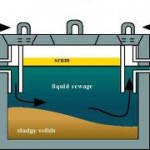Canadian home sales edge higher in November. Canadian homes sales seemed to be un-touched by the same forces which have decimated some of our US markets.
OTTAWA – December 15, 2011 – According to statistics released today by The Canadian Real Estate Association (CREA), national resale housing activity rose slightly in November 2011 from the previous month.
Highlights:
- Sales activity rose slightly (+0.5 per cent) from October to November on a seasonally adjusted basis.
- Year-to-date sales remained in line with the 10 year average, but pulled further ahead of last year’s levels.
- The number of newly listed homes was down 3.4 per cent from October to November.
- The national housing market remains balanced, but is edging closer to seller’s market territory.
- The national average price posted a 4.6 per cent year-over-year gain in November, the smallest increase since January.
Sales activity recorded through the MLS® Systems of real estate Boards and Associations in Canada edged upward by one-half of a percentage point. This marks the third straight month in which national activity was up from the previous month’s levels.
Activity rose in about 60 per cent of all local markets with a record November in the Halifax-Dartmouth region offsetting a dip in sales in Toronto.
“The Canadian housing market is proving resilient in the face of ongoing global economic and financial uncertainty, to the benefit of Canadian economic growth,” said Gary Morse, CREA’s President. “That said, some housing markets are picking up while others are holding steady or consolidating, so buyers and sellers should talk to their local REALTOR® to understand current and prospective trends in their local housing market.”
Throughout most months in 2011, actual (not seasonally adjusted) national home sales were in line with the 10-year average. November sales marked a break in that pattern, climbing seven per cent above the 10 year average and reaching the fourth highest level on record for the month.
“Toward the end of every year, there’s a natural inclination to compare how momentum for national sales activity and average price compare to the year before,” said Gregory Klump, CREA’s Chief Economist. “National sales activity picked up late last year, and November’s results suggest that a similar trend may be playing out again this year. By contrast, national average price also picked up toward the end of last year, whereas this year it has held steady after having peaked in the spring.”
“With interest rates expected to remain low for longer, the housing sector will no doubt be closely watched for signs of excess,” added Klump. “That said, current trends for resale housing and new home construction suggest that tightened mortgage regulations are working as intended and fostering economic stability in Canada.”
A total of 432,048 homes have traded hands via Canadian MLS® Systems so far this year, up 2.1 per cent from levels in the first 11 months of 2010. The year-to-date sales figure remains broadly in line (+0.7 per cent) with the average for that period from 2001 to 2010.
Compared to October, the number of newly listed homes fell 3.4 per cent in November. New listings slipped lower in more than two-thirds of Canadian housing markets, with Toronto, the Hamilton-Burlington region, and Calgary contributing most to the national decline.
The national housing market remains balanced, but is edging closer to seller’s market territory. The national sales-to-new listings ratio, a measure of market balance, stood at 55.5 per cent in November, up from 53.4 per cent in October. This marks the third month in which the national ratio has risen, and it now stands at its highest reading since the spring.
Based on a sales-to-new listings ratio of between 40 to 60 percent, just over half of local markets in Canada were balanced in November, while a third of markets qualified as sellers’ markets.
The number of months of inventory nationally stood at six months at the end of November. It has held steady at about this level since April, which is above levels posted during the first quarter. The number of months of inventory represents the number of months it would take to sell current inventories at the current rate of sales activity, and is another measure of the balance between housing supply and demand.
The actual (not seasonally adjusted) national average price for homes sold in November 2011 stood at $360,396. This represents a year-over-year increase of 4.6 per cent, its smallest increase since January.
PLEASE NOTE: The information contained in this news release combines both major market and national MLS® sales information from the previous month.
CREA cautions that average price information can be useful in establishing trends over time, but does not indicate actual prices in centres comprised of widely divergent neighborhoods or account for price differential between geographic areas. Statistical information contained in this report includes all housing types.
MLS® is a co-operative marketing system used only by Canada’s real estate Boards to ensure maximum exposure of properties listed for sale.
The Canadian Real Estate Association (CREA) is one of Canada’s largest single-industry trade associations, representing more than 100,000 REALTORS® working through more than 100 real estate Boards and Associations.
Further information can be found at http://www.crea.ca/public/news_stats/media.htm









 A Home Inspection is a visual inspection of all the components and systems of your home. The home inspector will operate and find items that are not functioning correctly. When a problem is found the inspector will include a picture and description of the problem in his report.
A Home Inspection is a visual inspection of all the components and systems of your home. The home inspector will operate and find items that are not functioning correctly. When a problem is found the inspector will include a picture and description of the problem in his report.


Recent Comments